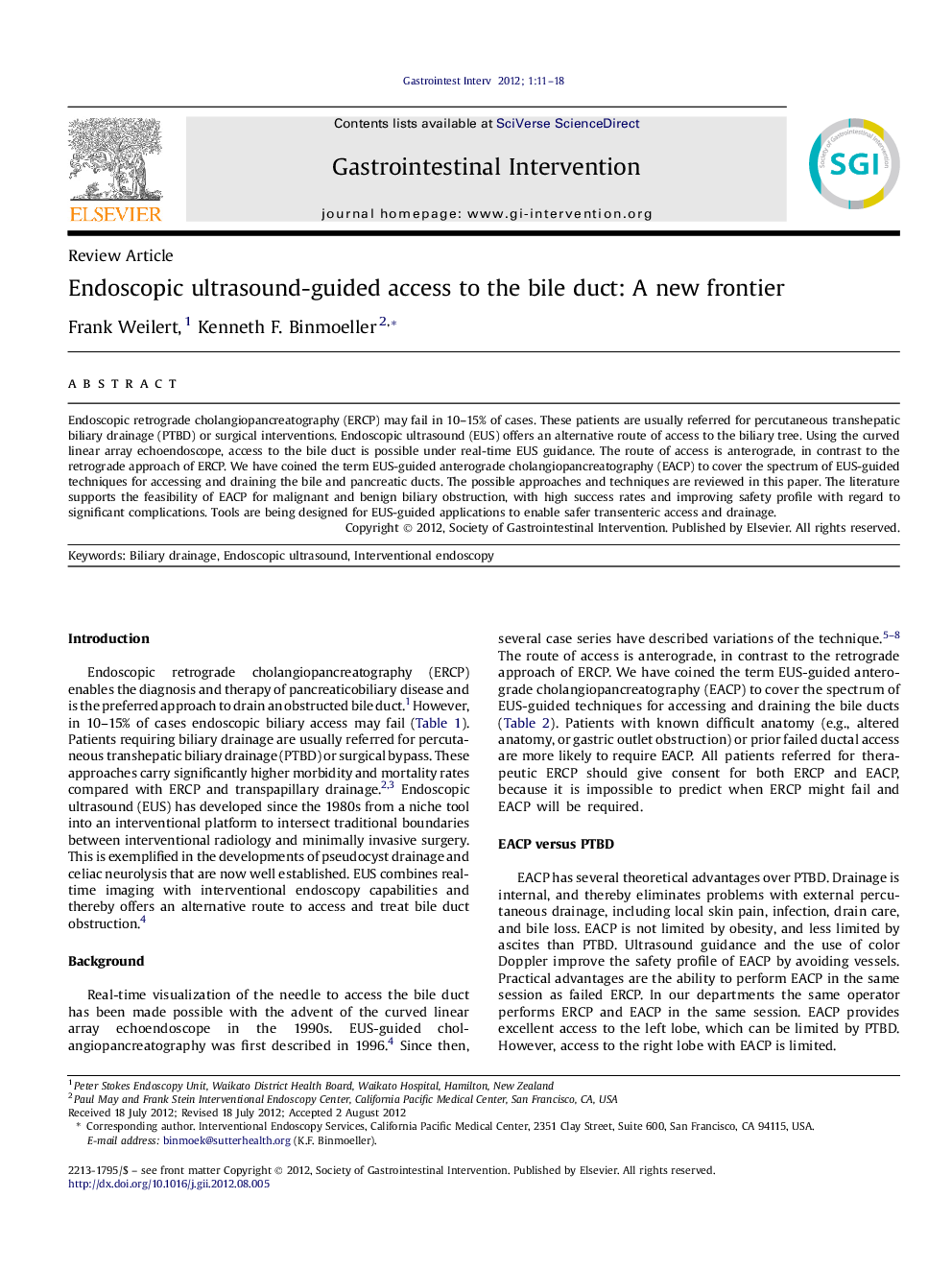| Article ID | Journal | Published Year | Pages | File Type |
|---|---|---|---|---|
| 3310982 | Gastrointestinal Intervention | 2012 | 8 Pages |
Endoscopic retrograde cholangiopancreatography (ERCP) may fail in 10–15% of cases. These patients are usually referred for percutaneous transhepatic biliary drainage (PTBD) or surgical interventions. Endoscopic ultrasound (EUS) offers an alternative route of access to the biliary tree. Using the curved linear array echoendoscope, access to the bile duct is possible under real-time EUS guidance. The route of access is anterograde, in contrast to the retrograde approach of ERCP. We have coined the term EUS-guided anterograde cholangiopancreatography (EACP) to cover the spectrum of EUS-guided techniques for accessing and draining the bile and pancreatic ducts. The possible approaches and techniques are reviewed in this paper. The literature supports the feasibility of EACP for malignant and benign biliary obstruction, with high success rates and improving safety profile with regard to significant complications. Tools are being designed for EUS-guided applications to enable safer transenteric access and drainage.
